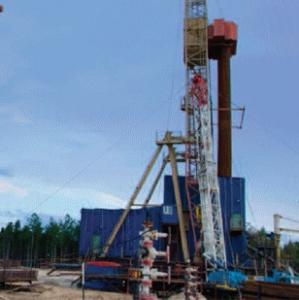

Of the many issues confronting the boom in formation fracturing processes at natural gas and shale oil well heads, one of the more important is the use and desired reuse of water consumed in the process. Todd Langford of GE Power & Water presented an overview of these challenges and some technical and engineering solutions being proposed or currently in use.
The driving forces
Most of the technologies and techniques involved the shale gas and oil fracturing process have been around for decades or longer. Even horizontal drilling has been practiced since the 70s. However, bringing all these to play on new oil shale deposits, and the media coverage (typically negative) have brought the water issue to the forefront. The concerns include:
- Political: Both pro and con influences, as politicians desire the new energy, jobs, and tax receipts, but have to deal with local concerns of their constituents.
- Social/local: Truck traffic, water availability, and water treatment concerns are primary in the communities that host these unconventional oil and gas fields.
- Technical/economic: Costs for water treatment and recovery are going down, and in some cases are lower than straight disposal options.
- Environmental: Degradation of the local aquifers and pollution from discharged produced and flow-back water are the main concerns. There may also be historical concerns with contamination from disposal wells.
- Legal: Liability reduction and regulatory compliance are the focus, as these local issues have become, though extensive media coverage, a national or even a global concern.
Treatment considerations

The fracturing "mixture" that is typically used is roughly 90% water, 9% "propant" (such as sand or ceramic beads) and 1% chemicals. Of all that water that goes into the well, 7-50% comes back out as produced water, but not consistently over time or of consistent quality. At the start of production, up to 6,000 bbl/day may be produced at a quality very near what was pumped in, but at the end of 30 days the flow may be down to 30 bbl/day with a TDS of over 175,000 ppm. Somewhere on the order of 4,500,000 gallons of water is used in fracturing operations in the lifetime of each well. Past practice was to utilize available groundwater (potable) for this. Several approaches can be taken to reduce the demand on the local aquifer. You can modify the fracturing process to utilized concentrated brines from some minimal level of treatment, or additional treatment technologies can be brought into play to provide treatment to a much higher (even potable) standard. Also, no well is like its neighbor, and so for each situation you must thoroughly evaluate: the source water quality and its effect on downstream treatment capabilities; the target water quality desired from the treatment system; and the process and economic issues' impact on the real-world feasibility of the proposed system.
Technological options
If advanced treatments of produced water are desired, rest assured that there is no "silver bullet" technology or treatment train that is available. GE has found that different combinations of many of their technologies can be successful in the various different applications that exist. Some of these advanced technologies include: polymeric membranes, both standard and HERO system configurations; ceramic membrane systems; membrane distillation; electrocoagulation processes; and even evaporation and crystallization technologies. Of course, some of the more "mundane" wastewater treatment unit operations like sedimentation and clarification, medial filtration, softening, DAF, oxidation, aeration, etc. are usually critical components of any treatment train to recover fracturing water.

For more information about GE's capabilities in these areas, contact Todd Langford at todd.langford@ge.com


